|
Jetex 100

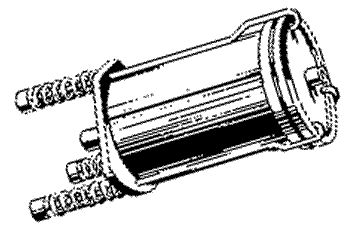

|
 |

The Jetex 100 was one of the first to be marketed by Wilmot Mansour, in 1948. It had three helical springs to act as a safety valve.
Rated equivalent to a 0.3 cc diesel, its end surge could give up to 1½ oz - 1¾ oz of thrust.
There were two derivatives. The original drawn case later gave way to a turned version. Eventually, and despite its popularity, this version was replaced by the Jetmaster (see below).
Shown below is an unboxed Jetex 100. Andy Blackwell, who provided the photo, surmises that “this must have been last knockings of the 100s and not worth repackaging with the Sebel brand”.
|
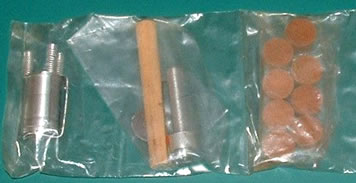
|

|
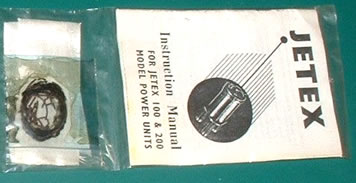
|
|
Jetmaster

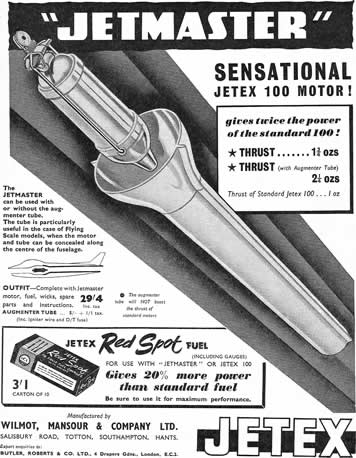



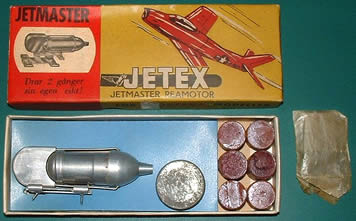 |
 |

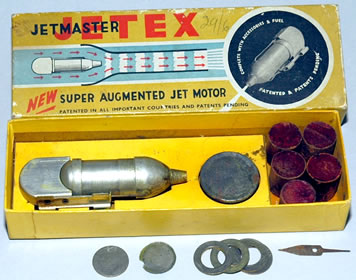
Introduced in 1952 (four years after the appearance of the Jetex 100), the Jetmaster was a sophisticated motor designed for use with an augmenter tube, hence the unusual nozzle shape. It was useful for large scale models and contest work.
It was criticised as a result of the many parts that made up the end cap and the "flimsy" nature of the mounting bracket. The venturi-shaped nozzle required a special tool, which was supplied, in order to clean the nozzle after every flight and the instructions have repeated warnings to ensure such precautions were taken.
In defence of the Jetmaster, it must be said that it was not necessary to tamper with the many parts that made up the end cap, and the difficulties encountered with the mounting bracket and wick threading could be overcome with ingenuity. They were more than compensated by the efficient springing, augmented thrust and the fact that the motor could take an extra half pellet increasing the duration to 22 seconds.
Simultaneously with the introduction of the Jetmaster, ICI released a new formulation of their Jetex fuel, in which the proportion of resorcinol had been tweaked to give a noticeable increase in thrust (Wilmot Mansour claimed “20% more power than standard fuel”. The improved fuel was marketed specifically for the Jetmaster under the ‘Red Spot’ brand, with distinctive new packaging (left), and later in smaller pellets for the Jetex 50.
Wilmot Mansour marketed the Jetmaster aggressively, even to the extent of producing special packaging for the Swedish market (left), where Jetex modelling enjoyed considerable popularity, largely thanks to the efforts of Sigurd Isacson. Isacson produced an impressive range of kits of his own design indigenous to Sweden, including the "Jetex Måsen" to take advantage of the power of the Jetmaster motor.
|
|
|